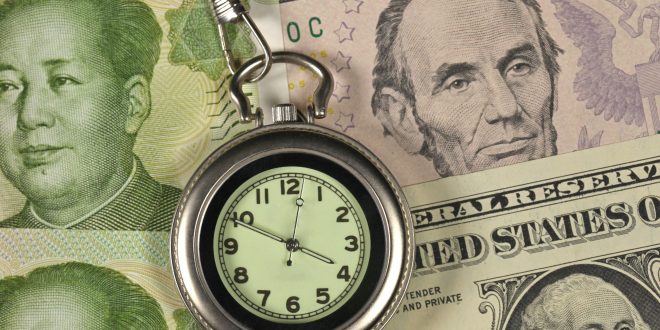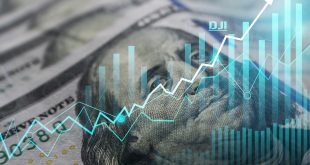Wall Street
US stocks closed significantly lower in a broad sell-off Friday, September 17, at the end of a week a busy week with economic data, fears of an increase in corporate taxes, the mutated delta strain of the Coronavirus, and possible shifts in the schedule for the US Federal Reserve to taper.
All three major US stock indices retreated, with the Nasdaq Composite incurring the biggest loss as rising US Treasury yields pressured growth-related stocks leading the market.
It also posted weekly losses, with the S&P500 index posting its biggest drop in two weeks since February.
The Dow Jones Industrial Average fell 168.15 points, or 0.48%, to 34,583.17 points, the S&P500 index closed down 41.06 points, or 0.92%, to 4432.69 points, and the Nasdaq Composite Index fell 137.96 points, or 0.91%, to 15043.97 points.
Europe
European shares fell on Friday, September 17, to record their third consecutive weekly loss, as the basic resources sector was affected by the decline of Anglo-American shares. Still, news of Britain’s study to ease travel restrictions boosted shares of airlines and hotels.
Anglo American tumbled 8.1% after Morgan Stanley, and UBS downgraded the stock.
The European mining index was also hit by concerns about slowing growth in China, as it slipped nearly 8% for the week. The pan-European Stoxx 600 index fell 0.9% today. The FTSE 100 index in London, heavy on mining stocks, fell 0.9%, while German stocks fell 1%.
This week, most regional indices came under pressure due to concerns about slowing global growth and tightening regulations for Chinese companies. Meanwhile, after closing 3.4% higher on Thursday in one of the best daily performances of the year, the European Travel & Leisure Index advanced 1.2%.
The index closed up 2.7% during the week, leading to the gains in European sectors.
Gold
Gold’s slight recovery from a sharp sell-off in the previous session lost its momentum Friday 17th of September as the dollar rose, making it head for the second consecutive weekly decline as investors focus on the US Federal Reserve’s strategy to reduce stimulus.
Gold futures fell to $1,753 per ounce, compared to last week’s closing of $1,787. The precious metal rose to its highest level at 1808 dollars, posting a low of 1745 dollars.
A sudden increase in US retail sales in August earlier in the week revived fears that the Fed would cut stimulus early, boosting the dollar and sending gold down nearly 3% on Thursday.
Oil
Oil prices fell on Friday, September 17, but settled above $75 a barrel and were on track for more than 3 percent weekly gains thanks to a slow recovery in US production after two hurricanes in the Gulf of Mexico.
West Texas Intermediate crude futures fell 39 cents, or 0.54 percent, to $ 72.22, after settling unchanged in the previous session.
The dollar rose to a three-week high on Friday, making dollar-denominated crude oil imports more expensive for countries using other currencies.
Twenty-eight percent of US crude production in the Gulf of Mexico was still suspended as of Friday, two and a half weeks after Hurricane Ida.
Meanwhile, preliminary data from the US Energy Information Administration showed that US crude exports in September fell to between 2.34 and 2.62 million barrels per day from 3 million barrels per day in late August.
Calendar
As measured by the Consumer Price Index (CPI), Inflation in the US edged lower to 5.3% yearly in August from 5.4% in July. This reading matched the market expectation. Monthly, the CPI arrived at 0.3%. The Core CPI, which excludes volatile food and energy prices, declined to 4% from 4.3%, compared to analysts’ estimate of 4.2%.
Retail Sales in the US rose by 0.7% monthly to $618.7 billion in August. This print surpassed the market expectation for a decrease of 0.8% by a wide margin. Excluding automobiles, Retail Sales were up 1.8%, compared to analysts’ estimate for a decline of 0.2%.
Consumer confidence in the US improved modestly in September with the University of Michigan’s Consumer Sentiment Index rising to 71 (September) from 70.3 in August. This reading came in slightly weaker than the market expectation of 72.2.
 Noor Trends News, Technical Analysis, Educational Tools and Recommendations
Noor Trends News, Technical Analysis, Educational Tools and Recommendations





